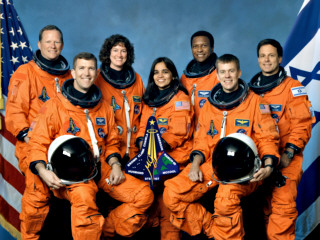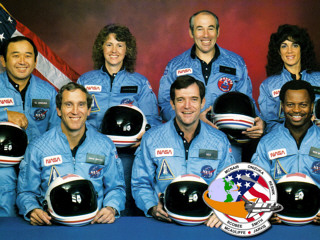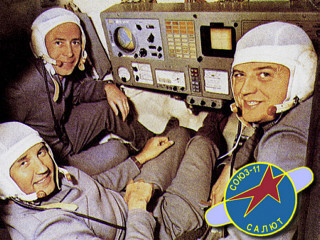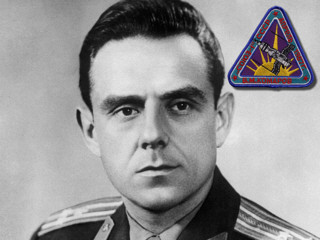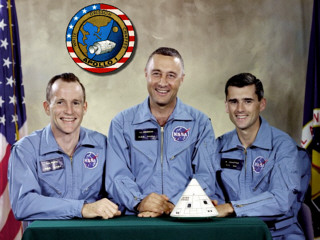Astronaut & Cosmonaut Memorial
The exploration of space is one of the greatest achievements of mankind. It would not have been possible without "faith of the heart", without the determination and dedication of the scientists, engineers, technicians and other personnel involved in the projects - and especially of the protagonists. Astronauts and cosmonauts are heroes, not because they take unnecessary risks, but because they allow their visions and dreams to come true.
Going into space has not yet become routine. It bears many risks, as a number of fatal accidents during the 43-year history of manned space travel sadly demonstrate. Nothing could compensate for the loss of these lives. But as long as the responsible administrations learn from their mistakes and negligences and make future missions safer, the disasters may at least have a positive and lasting effect.
This page is dedicated to the memory of the crews of Apollo 1, Soyuz 1, Soyuz 11, Challenger and Columbia.
Space Shuttle Columbia
David Brown, Rick Husband, Laurel Clark, Kalpana Chawla,
Michael Anderson, William McCool, Ilan Ramon
Contact was lost with the Space Shuttle Columbia during its re-entry on February 1, 2003, at 14:59 GMT. The shuttle broke apart at an altitude of 63.15 kilometers and a speed of Mach 18.3 above Texas. The reason for the disaster is deadly trivial: a piece of insulation foam broke off during the lift-off and damaged the heat shield.
Space Shuttle Challenger
Ellison Onizuka, Michael Smith, Christa McAuliffe, Francis Scobee,
Gregory Jarvis, Ronald McNair, Judith Resnik
The Space Shuttle Challenger was set to launch on January 28, 1986. After many delays, the craft finally took off. To the horror of hundreds of spectators and crew on the ground, the Challenger exploded 73 seconds later in a spiraling plume of smoke. All seven crew members were killed. The cause of explosion was determined to be an O-ring failure in the right solid rocket booster. This component, among many other changes, has been improved in the wake of the disaster.
Soyuz 11
Viktor Patsayev, Georgi Dobrovolsky, Vladislav Volkov
Returning from the first successful rendezvous with the Salyut space station on June 29, 1971, the crew died of asphyxiation caused by a leaking pressure equalization valve. The Soviet manned space program was halted for two years. In all subsequent missions since this accident cosmonauts are required to wear pressure suits during launch, docking and landing.
Soyuz 1
Vladimir Komarov
The Soyuz 1 mission, originally scheduled to rendezvous with Soyuz 2, was aborted on April 24, 1967. When the spacecraft returned to Earth, its parachute lines became tangled and the parachutes failed to open properly. Vladimir Komarov died in the crash. Investigation of this accident delayed the Soviet moon landing program by about 18 months, but ultimately made the Soyuz spacecraft more reliable.
Apollo 1
Edward Higgins White, Virgil Ivan "Gus" Grissom, Roger Bruce Chaffee
On January 27, 1967 at 6:31 local time, the three astronauts were on a simulated launch test, when a spark ignited a fire in the command module, nourished by the pure oxygen atmosphere. White, Grissom and Chaffee were killed within seconds. The official investigation came to the conclusion that NASA had underestimated the danger of 100% oxygen atmospheres. Many improvements, such as a replacement of inflammable materials and a new quick-opening hatch, were implemented to prevent such accidents in the future.
See Also
NASA References in Star Trek - richly illustrated, with information from Mike Okuda, the creator of many of the references
Credits
US crew images are copyright of NASA.

Back to Reports & Interviews index






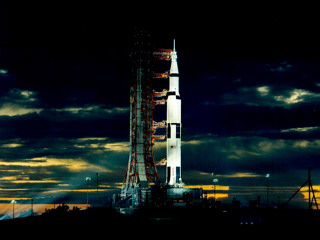
 Apollo 17 ready for launch
Apollo 17 ready for launch
